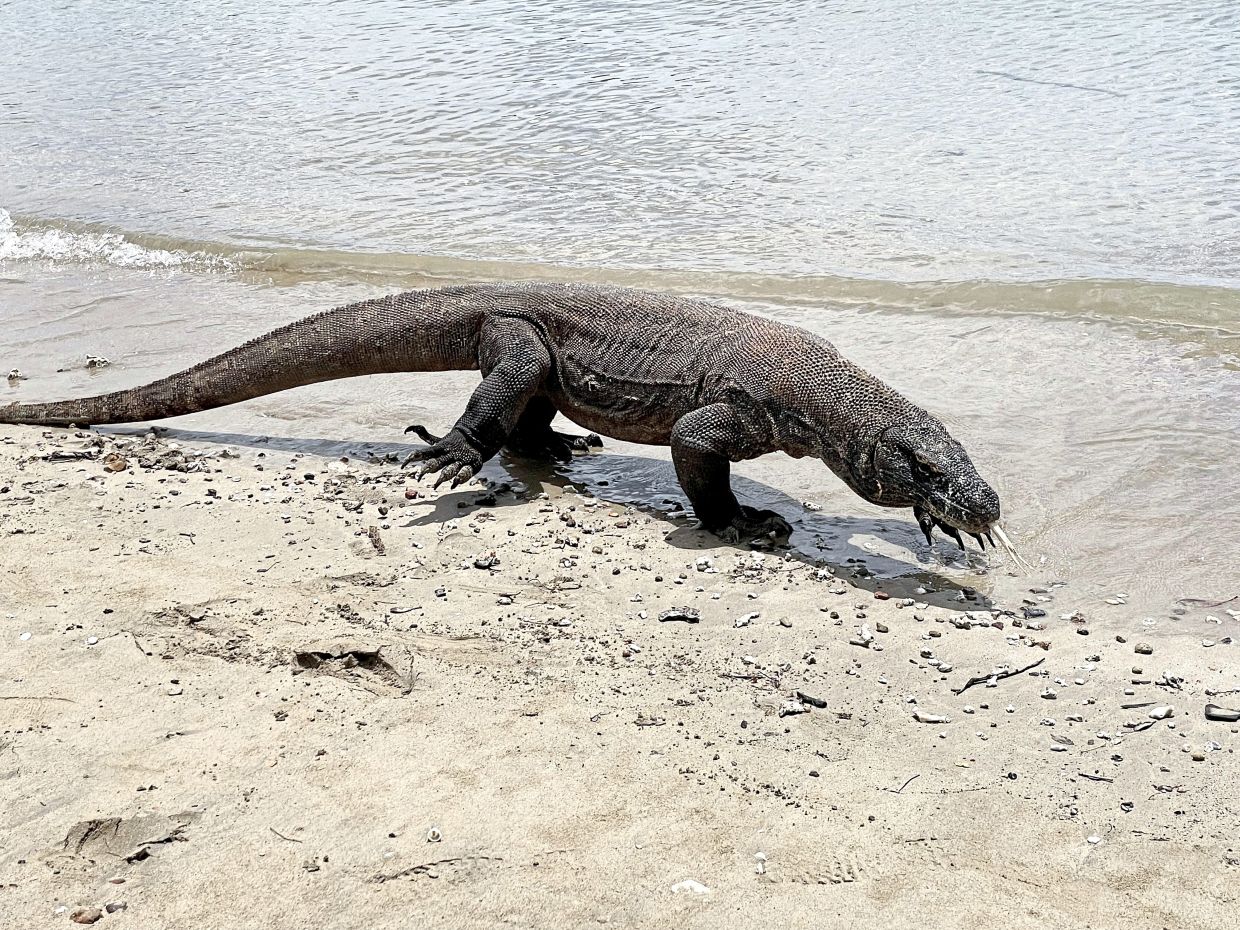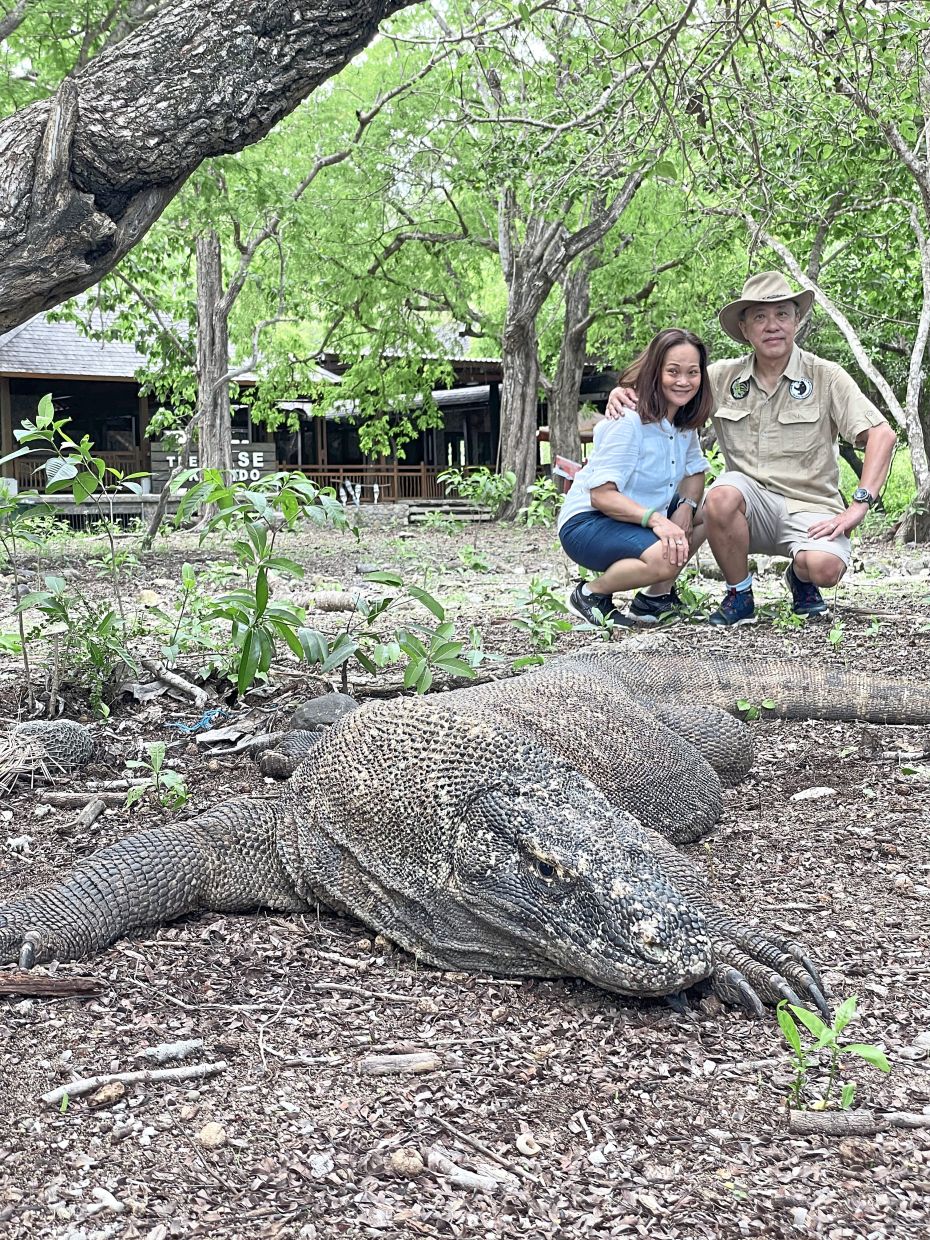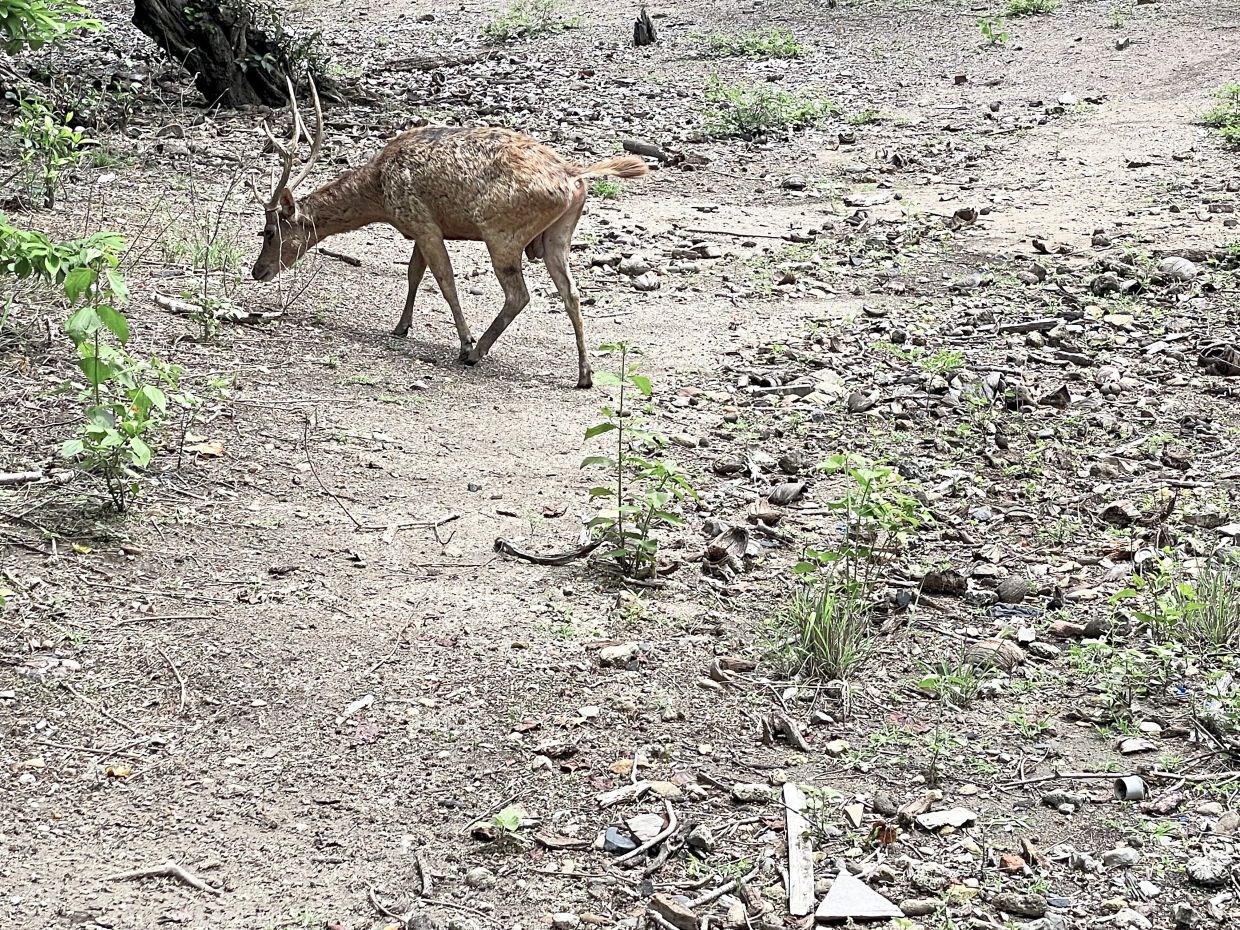
A close up of a Komodo dragon walking along the beach on the Komodo National Park in Indonesia. — FLORENCE TEH
Jurassic Park may have been a work of complete fantasy, but the first sight of Komodo National Park islands blurred the lines between fiction and reality. Sure, it was CGI dinosaurs in the Hollywood blockbuster, but the heavy hitters here are true relics of a prehistoric age.
As a tropical country, it’s easy to imagine Indonesia covered with dense rainforests.
But the island is characterised by savannah vegetation instead. It’s hot and dry. The three main islands, Komodo, Rinca and Padar, have rugged, rusty-red volcanic hillsides and pockets of thorny green vegetation.
Even before stepping into the park, I was fortunate to catch a glimpse of a giant Komodo dragon outside the entrance, which seemed to be scavenging for food on the beach.
The unscripted appearance caused a stir as excited visitors rushed to get a close-up view of the reptile.
Barely flinching at the potential aggressive nature of the reptile, I, too, ran towards it.
A guide had to scramble to warn the tourists to keep a safe distance from the giant lizard, although they were already playing National Geographic photographers with their smartphones.
It was the ideal start to a trip I had planned for years. Being home to the largest reptile in the world certainly warrants the archipelago being recognised as a Unesco World Heritage site.
I wanted to get there before the year ends because there’s been talk of Indonesia raising ticket prices for the park’s entry, and disturbing news reports about the construction of a separate park for affluent visitors.

The writer with his wife, Florence, with a giant Komodo dragon at the park. The picture was taken by one of the rangers.
But more than that, these lizards are rapidly vanishing and are now considered endangered.
On Komodo island, only about 1,200 remain from more than 3,000 previously. In fact, at nearby Padar island, the reptiles have completely disappeared.
The lizards at Komodo island can grow up to 3.5m (11 feet) while those at Rinca island are smaller at up to 2.5m (8 feet).
To reach Komodo island, I flew to Bali on Malaysia Airlines, and put up at a hotel near the Denpasar airport to catch the morning hour-long flight on Air Batik to Labuan Bajo, the gateway to Komodo island.
Labuan Bajo is a sleepy fishing village of about 5,000 people at the western end of the large island of Flores in the Nusa Tenggara region of east Indonesia.
As Komodo island is a three-hour boat ride from Labuan Bajo, we began our journey at 5.30am, when the sun had peaked well past the horizon.
I had expected a speed boat but was, instead, greeted by a wooden, open-decked single engine boat, which looked like it could be used for fishing.
I felt cheated by the travel agent. But the lesson here was that I shouldn’t have assumed otherwise. I should’ve asked for a picture of the boat we had hired. A slow boat meant my wife and I had less time on the island.
But all was forgiven when we reached the land mass. We had hardly walked for 10 minutes into the park before being greeted by two huge dragons taking respite from the heat under a tree.
There was a crowd, but it didn’t seem to bother the animals, which were the size of an average crocodile.
The five rangers, probably used to seeing excited tourists, tempered their enthusiasm professionally and even offered to take pictures – all done in an organised and orderly manner.
They even stopped photo bombs and shooed away those who didn’t belong in the pictures. They certainly deserve a tip for that!
I had a good conversation with a ranger, with a mix of Malay and my half-baked Bahasa Indonesia, and he shared a story of how his colleague, who had worked in the park for 12 years, was also once attacked by a dragon.
“But pak, please tell your Malaysian friends not to come during weekends. Come on weekdays when there are fewer people.
“The park opens at 7am and the weather is cooler. You will see more active lizards then,” he said.
Visitors are constantly reminded to remain on the trail to ensure their safety, as he shared anecdotes of stubborn visitors who ended up being attacked by these vicious living dinosaurs.
During peak hours, the rangers are likely to only take visitors for a short walk and satisfy them with posed pictures with the lizards.
Besides the reptiles, it’s easy to spot other animals such as deer, wild boars and monkeys.

Apart from the giant lizards, other small animals live on the island too, like deer and wild boar.
The park prohibits overnight stays, but I saw many schooners and yachts, with accommodation facilities, berthed just outside the island.
These are the serious visitors who want to visit the park a few times, as well as sail to nearby islands.
But before I walked to the jetty to board my boat, I saw another dragon, a much smaller one though, making its way lazily along the beach, as if to bid me farewell.
My only advice to those who have not seen the Komodo dragons is to just make the trip since Indonesia is so close to Malaysia.
When we were on the island, my wife and I were the only Malaysians, but we met people who came from as far as Chile, Japan and other faraway countries, to see these disappearing dinosaurs.





